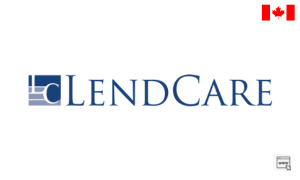How to get a loan in Canada?
Getting a loan can be a vital step toward achieving your financial goals, whether it’s covering unexpected expenses, investing in a dream vacation, or making a significant purchase.
Types of Loans in Canada
Understanding the different types of loans available is crucial. In Canada, two main categories dominate the lending landscape: personal loans and secured loans.
Personal Loans
A personal loan is essentially borrowing money from a bank or credit union without needing to provide collateral. This means you agree to pay back the borrowed amount along with interest over a set period. These loans can range from small amounts to larger sums, and repayment typically spans a few years.
Secured Loans
Secured loans differ significantly as they require collateral—something valuable you pledge to the lender. For instance, when you take out a mortgage, your home acts as collateral. If you default on the loan, the lender has the right to seize the collateral to recover their losses. Common examples include:
- Auto Loans: The car itself serves as collateral.
- Mortgages: Your home is the collateral, which means failing to repay can result in losing your home.
Line of Credit
Another flexible option in Canada is the line of credit. This allows you to borrow money up to a specified limit, akin to a credit card but focused on cash. You only pay interest on the amount you use, making it suitable for various needs like home renovations or managing cash flow.
Choosing the Right Loan
Choosing the right loan requires careful consideration of your financial needs and goals. Here are some key factors to think about:
Assessing Your Needs
Before you decide on a loan, clarify why you need the funds. Are you addressing an unexpected expense, making a big purchase, or consolidating debt? Understanding your requirements will guide you toward the best loan option.
Loan Duration
Consider whether you prefer a short-term or long-term loan. Short-term loans usually have higher interest rates but lower overall costs due to quicker repayment periods. Conversely, long-term loans may offer lower monthly payments but can accumulate more interest over time.
Types of Interest Rates
Loans typically come with two types of interest rates: fixed or variable. Fixed rates remain constant throughout the loan’s term, offering predictability in payments. Variable rates can fluctuate based on market conditions, which might affect your payments unexpectedly.
Secured vs. Unsecured Loans
When choosing between secured and unsecured loans, think about your willingness to risk collateral. Secured loans often have lower interest rates, but you could lose your asset if you fail to repay. Unsecured loans don’t require collateral but usually come with higher rates. Weigh these factors carefully to make an informed decision.
Preparing for Your Loan Application
Preparation is key when applying for a loan. Here’s what you should do:
Check Your Credit Score
Your credit score significantly impacts the interest rates you’ll receive. A higher score generally qualifies you for better rates. You can check your credit report for free through various Canadian websites, including Equifax and TransUnion.
Gather Necessary Documents
Before applying, ensure you have all required documents on hand, such as:
- Proof of income (e.g., pay stubs, tax returns)
- Bank statements
- Identification (e.g., driver’s license, passport)
Budget Wisely
Be honest about your financial situation. Can you manage the monthly payments? Use a loan calculator to estimate what your payments might look like based on the loan amount, interest rate, and duration.
Where to Get a Loan in Canada
You have various options for obtaining a loan in Canada. Here’s a breakdown:
Traditional Lenders
Banks are among the most reliable sources for loans, offering a range of products from personal loans to mortgages. They often provide personalized service and may have special deals for existing customers.
Online Lenders
Online lending has gained popularity for its convenience and quicker application processes. However, be cautious; some online lenders may charge higher interest rates. Always read reviews and do thorough research before proceeding.
Applying for the Loan
Once you’ve chosen a lender, here’s how to apply:
Compare Offers
Don’t rush into the first loan you find. Different lenders may offer varying interest rates, terms, and features. Take your time to compare options to find the best fit for your needs.
Fill Out the Application
Complete the lender’s application forms accurately and include all required documentation. Double-check everything before submission to avoid delays.
What Happens After Approval?
After your loan is approved, it’s essential to review the loan agreement carefully. Understand all terms and conditions, including the interest rate, repayment schedule, and any potential fees or penalties.
Manage Your Loan Responsibly
Once you receive your funds, make timely payments to maintain a good credit score and avoid penalties. If you have any questions about your loan agreement, reach out to your lender for clarification.



